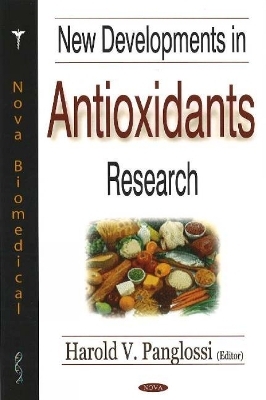
New Developments in Antioxidants Research
Seiten
2006
Nova Science Publishers Inc (Verlag)
978-1-59454-998-4 (ISBN)
Nova Science Publishers Inc (Verlag)
978-1-59454-998-4 (ISBN)
In biological systems, the normal processes of oxidation (as well as a minor contribution from ionising radiation) produce highly reactive free radicals. These can readily react with and damage other molecules. This book brings together the antioxidants research in this dynamic field.
In biological systems, the normal processes of oxidation (plus a minor contribution from ionising radiation) produce highly reactive free radicals. These can readily react with and damage other molecules. In some cases the body uses free radicals to destroy foreign or unwanted objects, such as in an infection. However, in the wrong place, the body's own cells may become damaged. Should the damage occur to DNA, the result could be cancer. Antioxidants decrease the damage done to cells by reducing oxidants before they can damage the cell. Virtually all studies of mammals have concluded that a restricted calorie diet extends the life-span of mammals by as much as 100%. This remarkable finding suggests that food is actually more damaging than smoking. As food produces free radicals (oxidants) when metabolised, antioxidant-rich diets are thought to stave off the effects of aging significantly better than diets lacking in antioxidants. The reduced levels of free radicals, resulting from a reduction in their production by metabolism, is thought to be a major cause of the success of caloric restriction in increasing life span. Antioxidants consist of a group of vitamins including vitamin C, vitamin E, selenium and carotenoids, (such as beta-carotene, lycopene, and lutein). This new book brings together the latest research in this dynamic field.
In biological systems, the normal processes of oxidation (plus a minor contribution from ionising radiation) produce highly reactive free radicals. These can readily react with and damage other molecules. In some cases the body uses free radicals to destroy foreign or unwanted objects, such as in an infection. However, in the wrong place, the body's own cells may become damaged. Should the damage occur to DNA, the result could be cancer. Antioxidants decrease the damage done to cells by reducing oxidants before they can damage the cell. Virtually all studies of mammals have concluded that a restricted calorie diet extends the life-span of mammals by as much as 100%. This remarkable finding suggests that food is actually more damaging than smoking. As food produces free radicals (oxidants) when metabolised, antioxidant-rich diets are thought to stave off the effects of aging significantly better than diets lacking in antioxidants. The reduced levels of free radicals, resulting from a reduction in their production by metabolism, is thought to be a major cause of the success of caloric restriction in increasing life span. Antioxidants consist of a group of vitamins including vitamin C, vitamin E, selenium and carotenoids, (such as beta-carotene, lycopene, and lutein). This new book brings together the latest research in this dynamic field.
Preface; Reactive Oxygen Species and Dietary Antioxidants: Double-Edged Swords; Methionine Redox Status as a Mediator of PrPc Function; Isothiocyanates as Promising Chemopreventive and Antioxidant Agents; Novel Hydroxyphenylureas as Antioxidant and Chemopreventive Agents; Oxidative and Nitrosative Stress in Human Aging: Age-Related Changes and Putative Mechanisms; Relationship of Structure and Antioxidant Activity of Synthetic Silybin- and Isosilybin Derived Molecules: Identification of Molecular Structure Responsible for Antioxidant Activity Employing Various Models for Inducing Oxidative Stress; Measurements of Total Antioxidant Activity; Index.
| Erscheint lt. Verlag | 10.4.2006 |
|---|---|
| Zusatzinfo | Illustrations |
| Verlagsort | New York |
| Sprache | englisch |
| Maße | 260 x 180 mm |
| Gewicht | 583 g |
| Themenwelt | Studium ► 1. Studienabschnitt (Vorklinik) ► Biochemie / Molekularbiologie |
| ISBN-10 | 1-59454-998-2 / 1594549982 |
| ISBN-13 | 978-1-59454-998-4 / 9781594549984 |
| Zustand | Neuware |
| Informationen gemäß Produktsicherheitsverordnung (GPSR) | |
| Haben Sie eine Frage zum Produkt? |
Mehr entdecken
aus dem Bereich
aus dem Bereich


